This article was co-authored by Lisa Bryant, ND. Dr. Lisa Bryant is Licensed Naturopathic Physician and natural medicine expert based in Portland, Oregon. She earned a Doctorate of Naturopathic Medicine from the National College of Natural Medicine in Portland, Oregon and completed her residency in Naturopathic Family Medicine there in 2014.
There are 34 references cited in this article, which can be found at the bottom of the page.
wikiHow marks an article as reader-approved once it receives enough positive feedback. This article received 36 testimonials and 89% of readers who voted found it helpful, earning it our reader-approved status.
This article has been viewed 834,962 times.
While there is controversy in the scientific and medical worlds over whether viruses are even live organisms, there is no controversy that viral infections cause a wide variety of diseases, chronic conditions, cancer, long-term illness, suffering and death. There is also controversy about whether some viral infections are ever “cured.” There are many viruses that survive in human cells with long-term and chronic consequences and most viruses are difficult to treat because they are protected by the host’s own cells. , [1] , [2] , [3] Viral infections can be acute (short-term, varying in severity), chronic (long-term, varying in severity) or latent, waiting for various periods of time in a sort of hibernation until their replication is triggered. Viral illnesses can be uncomfortable and cause you to miss a few days of productivity, but they are generally treatable at home. Using herbal remedies and giving your body adequate nutrition and rest are approaches to fighting off viral infections.
Steps
Reducing a Fever Without Medication
-
1Let the fever do its work. It is not well appreciated by most, but fevers are one of the body’s main defenses against infections. Let a fever run as long as possible without too much discomfort. [4]
- Fever is most often a symptom of an infection but can also be caused by inflammatory conditions, thyroid disease, cancer, vaccines and some drugs. Temperature is regulated by a small gland located in the center of the brain, the hypothalamus. The thyroid gland also plays a role in body temperature. Body temperature can vary throughout the day, but a normal temperature is considered 98.6 degrees F or 37 degrees C.
- During an infection, the infecting agent (bacteria, virus) produce temperature-increasing substances called pyrogens. Some pyrogens are also induced by the immune system. These pyrogens tell the hypothalamus to increase body temperature. This in turn, stimulates the immune system to be more effective at fighting off an infection. Higher body temperature is believed to kill off infectious agents as well.[5] , [6]
- For adults, most fevers are not dangerous and you can let the fever “run its course”. If the fever is sustained at over 103 degrees F (39.4 degrees C) or higher for more than 12 to 24 hours, consider calling a physician.[7]
-
2Be cautious about higher fevers. While you can allow a fever to run its course, there are limits to how high you should let a fever go:[8]
- For infants younger than four months old with a rectal temperature of 100.4 degrees F (38 degrees C) or higher, immediately call your physician for advice.
- For children of any age, if their rectal temperature is 104 degrees F (40 degrees C) or higher, immediately call your physician for advice.
- Any child six months or older with a fever of 103 degrees F (39.4 degrees C) by measuring on the forehead, ear or armpit, should also be seen.
Advertisement -
3Seek immediate medical care if fever is experienced with severe symptoms. It is recommended that if your child has any fever along with any of the following symptoms, call your doctor (or emergency services) as soon as possible:
- Looks sick or has no appetite
- Is very fussy
- Is drowsy
- Has obvious signs of infection (pus, discharge, streaky rashes)
- Has a seizure
- Has a sore throat, a rash, a headache, a stiff neck, an earache
- In very young infants, if the soft area on the top of baby’s skull is bulging
-
4Take a lukewarm bath. Start off by drawing a lukewarm bath. Have the person with a fever get in and relax while the temperature of the water slowly drops. Because the temperature of the water drops slowly, the person cools down slowly as well. You don’t want the water too cool because you don’t want to drop the body temperature too fast.[9]
-
5Wear wet socks. This treatment is a traditional naturopathic approach. The theory is that cold feet stimulate an increase in circulation and an increased response from the immune system. The result is that the body expends heat and ends up drying the socks and cooling the body. This treatment can relieve chest congestion as well. The wool socks, by the way, serve as insulation. This method works best overnight.
- Use a pair of cotton socks long enough to cover the ankles. They should be pure cotton because cotton absorbs a lot of water.
- Thoroughly wet the socks in cold running tap water.
- Wring out all excess water and put the socks on.
- Cover these cotton socks with wool socks. The wool socks should be pure wool because this supplies excellent insulation.
- The person wearing the socks should be covered with a blanket and rest in bed for the rest of the night. Most kids will be pretty cooperative because they should begin to feel cooler within a few short minutes.
-
6Cool the head, neck, ankles and the wrists. Take one or two hand towels and fold along the longer axis. Soak the towels in either very cold water, or, if desired, ice water. Wring out the excess water and wrap the towel around your head, around your neck, around your ankles or around your wrists.
- Don’t use the towels over more than two areas. That is, use the towel around your head and your ankles OR around your neck and your wrists. Otherwise, you may cool down TOO much. The cool or cold towels draw heat out of the body and can lower the body temperature.
- Repeat when the towel is dry or not cool enough anymore to give relief. This can be repeated as often as needed.
Giving Your Body Adequate Energy
-
1Get plenty of rest. While it is not always easy, getting rest and staying restful is important in getting over a viral infection. Your body’s immune system is trying to do the necessary work. It can’t do this successfully if you are using energy for work, school or taking care of someone else. So, stay home from work, keep children home from school and keep your activity level low and as easy as you can.
-
2Feed your body with light foods. You probably have heard the phrase “Feed a cold, starve a fever” A recent article in Scientific American agrees[10] -- except you don’t really want to go so far as to “starve” the fever-- you just don’t want to waste the body’s energy with digestion when that energy should be used to control the infection.
-
3Focus on fresh fruit rich in vitamin C. Eat plenty of fresh fruit such as berries, watermelon, oranges and cantaloupe. These fruit are also rich in vitamin C, which can help fight infections and lower fevers.
-
4Eat yogurt. Try either plain or flavored yogurt that contains “active cultures” of bacteria. These intestinal bacteria have been shown to be essential for a functional immune system.
-
5Include protein in your meal. Make sure you include a good and easily digested source of protein such as scrambled eggs or chicken. For example, you can add a few pieces of meat to your chicken broth.
-
6Avoid heavy and fried foods. Avoid foods that are heavy, fatty or oily like barbecued or fried foods. Avoid spicy foods like chicken wings, pepperoni, or sausages too. These are too hard on your system when you’re ill.
-
7Try the BRAT diet. The BRAT diet is often recommended, especially after a stomach virus. This consists of gentle and easy-to-digest foods, including:[13]
- Bananas
- Rice
- Applesauce
- Toast (whole grain).
-
8Eat foods rich in zinc. Zinc has been shown to reduce the length of time one has a cold. Food sources of zinc include seafood (oysters, king crab, lobster), beef, chicken (dark meat), yogurt, beans and nuts (cashews, almonds).
Staying Hydrated
-
1Drink plenty of water. Fever can lead to dehydration and you want to make sure you avoid this. It will only make you feel worse. Kids (and you) might enjoy frozen popsicles as well, but you do want to avoid too much sugar. Try making popsicles from herbal teas such as chamomile or elderberry. Frozen Italian ices or frozen yogurt or sherbet may be good choices as well. But don’t forget plain water!
-
2Try an oral rehydration solution such as Pedialyte or CeraLyte. You may want to consider using an oral rehydration solution for young children like CeraLyte, Pedialyte. Call your physician before you do, and ask their advice.
- Be prepared with a list of symptoms and about how much your child has been eating, drinking and how high their fever has been.
- Also keep track of how often you have to change diapers or, for an older child, how often they have to urinate.
-
3Keep breastfeeding your baby. If your baby is suffering from a viral infection, it’s a good idea to continue breastfeeding as much as possible. This provides food, water and comfort to your baby.
-
4Monitor for signs of dehydration. Call your physician for advice even if you are just seeing the signs of mild dehydration, especially in babies. These can progress to more serious dehydration pretty quickly. Some symptoms of mild dehydration include:[14]
- Dry, sticky mouth. In a baby, look for dry lips or crustiness around the lips/eyes. Also look for “lip-smacking” behavior.
- More sleepiness, fussiness or tiredness than usual.
- Thirst: This is hard to tell in a small infant, but the “lip smacking” behavior or pursing her lips as if she is feeding may be a clue.
- Decreased urine output: Check an infant’s diapers. They should need to be changed at least every three hours. If the diaper is dry after 3 hours, this may indicate some dehydration. Keep pushing fluids and check after another hour. If the diaper is still dry, call your physician.
- Check the color of urine. The darker the urine, the more dehydrated the baby or child may be.
- Constipation: Check for bowel movements as well, especially when you’re checking the diaper for urine.
- Few or no tears when crying
- Dry skin: Gently pinch the back of the baby’s hand, just pinching the loose skin. Well-hydrated babies have skin that bounces right back.
- Dizziness or lightheadedness
Taking Supplements
-
1Boost your immune system with high doses of vitamin C. Orthomolecular medicine has found that vitamin C is important in stimulating the immune system. In one study, asymptomatic adults came down with the flu. They were given 1000 mg of vitamin C on an hourly basis for six consecutive doses. They then received 1000 mg three times daily as long as they were symptomatic. Their reported flu and cold symptoms were reduced by 85% compared to a placebo.[15]
- Take 1000 mg of vitamin C every hour for six hours. Then take 1000 mg three times a day until you don't feel your symptoms anymore.
-
2Increase your intake of vitamin D3. Vitamin D3 is an important vitamin that stimulates the immune system. If you are not already taking vitamin D3 supplements regularly, there is a high probability that you may be deficient in vitamin D. This could be measured with 25-hydroxyvitamin D blood levels. But when a flu hits, there is no time to do this.
- For adults: Take 50,000 IU of vitamin D3 on the first day you feel sick. Then take the same amount every day for the next three days. Reduce the vitamin D3 dose slowly over the next few days to 5000 IU daily.
- In schoolchildren, another study showed that 1200 IU of vitamin D3 reduced the incidence of influenza by 67% compared to a control group that did not take any vitamin D3 supplement. [16]
-
3Try coconut oil. Coconut oil has medium chain fatty acids that have antiviral, antibacterial, antifungal and antiparasitic effects without having side effects. The main ingredient in coconut oil is lauric acid, a medium chain saturated fatty acid. It inserts itself into the viral outer membrane and causes a rupture and death of the influenza virus without harming the human host of the virus.
- Take one to two tablespoons of coconut oil three times per day. Mix it in warm orange juice or take it with a meal. Usually within one to two days, the virus will be eliminated. Symptoms often disappear within one day, when normally it would have taken five to seven days to recover from a flu,[17]
Trying Herbal Remedies
-
1Try drinking herbal tea. Plants get viruses too, so it does make some evolutionary sense that plants have developed antiviral substances. You can buy these herbs in teabags. If you have them at hand, add one teaspoon of dried herb for every cup of water. Use half a teaspoon for children. Steep in boiled water for five minutes and flavor as desired with lemon and honey. Be sure to let the tea cool down. Avoid adding milk--dairy products tend to increase congestion.
- Don’t use these teas with infants, except under the advice of a physician.
- Try an herbal tea made from the following herbs: [18]
- Chamomile: Chamomile is safe for children and has anti-viral properties.[19] , [20]
- Oregano: Oregano is also safe for children (but make it as a weak tea) and has antiviral properties.[21] , [22]
- Thyme: Thyme is safe for children (as a weak tea) and has antiviral properties.[23] , [24]
- Olive leaf: This is safe for children (as a weak tea) and has antiviral properties.[25]
- Elderberry: This is safe for children (as a tea or as a juice) and has antiviral properties.[26] , [27]
- Licorice leaf: Licorice leaf is safe for children (as a weak tea) and has antiviral properties.[28] , [29]
- Echinacea: This is safe for children (as a weak tea) and has antiviral properties.[30] , [31]
-
2Use a neti pot. A neti pot can be used to wash out a stuffy nose. It is a device that looks somewhat like a teapot. You use it to pour water into your nose to flush out your nasal cavities.
- Choose your essential oils. The herbs that can be used to make teas are also good choices for essential oil treatments. These include: chamomile, elderberry, licorice root, Echinacea, olive root, thyme and oregano. Combine an equal number of drops of your chosen oils. The TOTAL number of drops should be nine to ten at the most.
- In a separate bowl, add one and a half cups of very warm distilled water. Don’t use water that is so hot that you scald the delicate nasal tissues.
- Add six tablespoons of finely ground unprocessed sea salt. Stir to dissolve the salt. The salt is included to help ensure that the nasal tissue is protected.
- Add the essential oils and mix thoroughly.
- Add the liquid to your neti pot.
- Bend forward over a sink, turning your head to one side. Slowly pour the solution through the nasal cavities to clean them.
-
3Use a diffuser. This method can be very useful, especially if more than one member of your family has a sinus infection or respiratory infection. Choose your oils from among chamomile, elderberry, licorice root, Echinacea, olive root, thyme and oregano. Or, you can make your own unique mixture.
- Follow the manufacturer’s instructions using the diffuser. Most use about a half cup of water with three to five drops of essential oils.
- Anyone with a sinus infection should sit as close as possible to the diffuser.
-
4Use the old-fashioned method of steaming. In this method, all you need is water and your chosen essential oils or mixture of oils. You’ll boil water to create steam, which you’ll breathe through your nose.
- Pour water (distilled is best, but tap water is fine) until the bottom of the pot has about two inches of water.
- Heat the water to boiling, turn off the heat and add eight to ten drops of essential oils. Stir.
- You can either leave the pot on the stove or take it off. Just be careful, whichever you decide.
- Cover your head with a towel and breathe in the steam through your nose. You can also breathe through your mouth, especially if you have a sore throat or a throat infection.
- Do this as long as the steam is rising. Repeat if desired by reheating the water. The same solution can be used over and over until all the water is gone.
-
5Breathe in herb-infused steam. Take the old-fashioned method of breathing steam and add herbs to the water.
- Pour water (distilled is best, but tap water is fine) until the bottom of the pot has about two inches of water.
- Heat the water to boiling, turn off the heat and add two teaspoons of oregano and two teaspoons of basil. If you want, you can add a pinch of cayenne pepper. Just be careful!
- Cover your head with a towel and breathe in the steam through your nose. You can also breathe in through your mouth, especially if you have a sore throat or a throat infection.
- Do this as long as the steam is rising. Repeat if desired by reheating the water.
Seeing a Doctor
-
1See your doctor if your immune system is compromised. With most common viruses and with most healthy adults, viral infections clear without additional treatment. If, however, an individual’s immune system is compromised, a doctor should be called as soon as any symptoms of infection occur. Immune compromise can occur in the very young, older individuals, those infected with HIV/AIDs, individuals who have had an organ transplant and cancer patients going through chemotherapy. Watch for these common symptoms of viral infections:
- Fever
- Joint aches and pains
- Sore throat
- Headache
- Nausea, vomiting, diarrhea
- Skin rash
- Fatigue
- Nasal congestion
-
2Call a doctor immediately if the common symptoms worsen. If any of the common viral infection symptoms becomes severe, call a physician immediately. If a physician is not available, call for emergency services. [32]
-
3Seek immediate medical care if you experience certain severe symptoms. If you experience any of the following symptoms at any time, go to your nearest emergency room.[33]
- Any change in your alertness or level of consciousness
- Chest pain
- A deep chest cough that produces wet or liquid yellow, green or brownish phlegm (discharge)
- Lethargy or unresponsiveness to stimuli (sounds, light, touch)
- Any form of seizure
- Any shortness of breath, wheezing, or any difficulty breathing
- A stiff or sore neck, or a severe headache
- Yellowing of the skin or the sclera (the whites of the eyes)
-
4Get vaccinated. Specific treatment always depends on the specific virus. There are hundreds of different viruses that are known to infect humans. Many can be largely prevented with vaccination, such as influenza, chicken pox, shingles and others.
- Talk with your doctor about getting vaccinated against certain viruses.
-
5Visit your doctor if you don’t get relief from home remedies. If you experience symptoms that you think may be a viral infection for more than 48 hours without getting relief from the approaches listed, make an appointment to see your doctor as soon as possible. Many viral infections, like the common cold (rhinoviruses), the flu (influenza virus), measles (rubeola) or mononucleosis (Epstein-Barr virus, or EBV), require primarily supportive treatment. Other viruses cause serious, life-threatening diseases such as cancer and Ebola. Some persistent viruses cause long-term disorders including hepatitis, HSV and varicella-zoster (causing chickenpox and shingles) and HIV.[34]
-
6Ask about antiviral drugs. Until relatively recently, there were no effective antiviral drugs. That is changing, with more antiviral drugs being introduced.[35] Antiviral therapy is important for certain infections, including infections with herpes viruses (HSVs), cytomegaloviruses (CMVs) and the human immunodeficiency virus (HIV).
- Another approach to treating viral infection is to use interferons. These are natural substances (cytokines) released from infected cells which function to block various facets of viral replication. [36] Use of the interferons is particularly important in the treatment of the hepatitis viruses (B and C), Kaposi’s sarcoma associated with HIV infection, and a sexually transmitted infection called condyloma acuminata, which results in genital warts. [37]
References
- ↑ http://www.nlm.nih.gov/medlineplus/viralinfections.html
- ↑ http://ghr.nlm.nih.gov/glossary=oncogene
- ↑ http://www.mayoclinic.org/diseases-conditions/shingles/basics/definition/con-20019574
- ↑ http://www.mayoclinic.org/diseases-conditions/fever/basics/treatment/con-20019229
- ↑ Thomas A. Mace, Lingwen Zhong, Casey Kilpatrick, Evan Zynda, Chen-Ting Lee, Maegan Capitano, Hans Minderman, and Elizabeth A. Repasky. Differentiation of CD8+ T cells into effector cells is enhanced by physiological range hyperthermia. J. Leukoc Biol November 2011 90:951-962.
- ↑ http://www.pbs.org/wgbh/evolution/library/10/4/l_104_04.html
- ↑ http://www.mayoclinic.org/diseases-conditions/fever/basics/definition/con-20019229
- ↑ http://pediatrics.aappublications.org/content/127/3/580.full
- ↑ http://www.mayoclinic.org/diseases-conditions/hypothermia/basics/definition/con-20020453
- ↑ http://www.scientificamerican.com/article/fact-or-fiction-feed-a-cold/
- ↑ Bender BS. Barbara, what’s a nice girl like you doing writing an article like this? : the scientific basis of folk remedies for colds and flu Chest 2000;118(4):887-888.
- ↑ Saketkhoo, K., Januszkiewicz, A., Sackner, MA. Effects of drinking hot water, cold water and chicken soup on nasal mucus velocity and nasal airflow resistance. Chest 1978; 74,408-410.
- ↑ http://familydoctor.org/familydoctor/en/prevention-wellness/food-nutrition/weight-loss/brat-diet-recovering-from-an-upset-stomach.html
- ↑ http://www.mayoclinic.org/diseases-conditions/dehydration/basics/symptoms/con-20030056
- ↑ LifeExtension: “Disease Prevention and Treatment,” 2013, page 825-826.
- ↑ LifeExtension: “Disease Prevention and Treatment”, 2013, page 825.
- ↑ Bruce Fife, C.N., N.D: “The Coconut Oil Miracle”, 5th edition, Penguin Group, 2013, New York, New York 10014; page 70-77.
- ↑ http://www.botanical-online.com/english/feverremedies.htm
- ↑ Koch C, Reichling J, Kehm R, Sharaf MM, Zentgraf H, Schneele J, Schnitzler P.Efficacy of anise oil, dwarf-pine oil and chamomile oil against thymidine-kinase-positive and thymidine-kinase-negative herpesviruses. J Pharm Pharmacol. 2008 Nov;60(11):1545-50.
- ↑ Koch C, Reichling J, Schneele J, Schnitzler P. Inhibitory effect of essential oils against herpes simplex virus type 2. Phytomedicine. 2008 Jan;15(1-2):71-8.
- ↑ Sánchez G, Aznar R. Evaluation of Natural Compounds of Plant Origin for Inactivation of Enteric Viruses. Food Environ Virol. 2015 Jan 31
- ↑ Zhang XL, Guo YS, Wang CH, Li GQ, Xu JJ, Chung HY, Ye WC, Li YL, Wang GC. Phenolic compounds from Origanum vulgare and their antioxidant and antiviral activities. Food Chem. 2014;152:300-6.
- ↑ http://www.botanical-online.com/english/feverremedies.htm
- ↑ Zeina B, Othman O, al-Assad S. Effect of honey versus thyme on Rubella virus survival in vitro. J Altern Complement Med. 1996 Fall;2(3):345-8.
- ↑ Knipping K, Garssen J, van't Land B.An evaluation of the inhibitory effects against rotavirus infection of edible plant extracts. Virol J. 2012 Jul 26;9:137.
- ↑ Kinoshita E, Hayashi K, Katayama H, Hayashi T, Obata A. Anti-influenza virus effects of elderberry juice and its fractions. Biosci Biotechnol Biochem. 2012;76(9):1633-8.
- ↑ Krawitz C, Mraheil MA, Stein M, Imirzalioglu C, Domann E, Pleschka S, Hain T. Inhibitory activity of a standardized elderberry liquid extract against clinically-relevant human respiratory bacterial pathogens and influenza A and B viruses. BMC Complement Altern Med. 2011 Feb 25;11:16.
- ↑ Laconi S, Madeddu MA, Pompei R. Autophagy activation and antiviral activity by a licorice triterpene. Phytother Res. 2014 Dec;28(12):1890-2
- ↑ Liu H, Wang J, Zhou W, Wang Y, Yang L. Systems approaches and polypharmacology for drug discovery from herbal medicines: an example using licorice. J Ethnopharmacol. 2013 Apr 19;146(3):773-93.
- ↑ Ghaemi A, Soleimanjahi H, Gill P, Arefian E, Soudi S, Hassan Z Echinacea purpurea polysaccharide reduces the latency rate in herpes simplex virus type-1 infections. Intervirology. 2009;52(1):29-34.
- ↑ Birt DF, Widrlechner MP, Lalone CA, Wu L, Bae J, Solco AK, Kraus GA, Murphy PA, Wurtele ES, Leng Q, Hebert SC, Maury WJ, Price JP. Echinacea in infection. Am J Clin Nutr. 2008 Feb;87(2):488S-92S.
- ↑ http://www.nlm.nih.gov/medlineplus/ency/article/000073.htm
- ↑ http://www.nlm.nih.gov/medlineplus/ency/article/000073.htm
- ↑ http://www.ncbi.nlm.nih.gov/books/NBK8538/
- ↑ http://ghr.nlm.nih.gov/glossary=oncogene
- ↑ http://ghr.nlm.nih.gov/glossary=oncogene
- ↑ http://ghr.nlm.nih.gov/glossary=oncogene
About This Article
To cure a viral infection with home remedies, try eating foods that are known to help fight infection. For example, foods high in Vitamin C, like berries, watermelon, and oranges, can fight infections and lower fevers. Foods high in zinc can also help to fight colds, like beef, chicken, yogurt, and beans. Try drinking an herbal tea, like chamomile, licorice leaf, or echinacea. In addition to eating a healthy diet, make sure you get plenty of rest and drink lots of water to give your body the energy it needs to recover. Another way to treat your infection is to inhale steam, which can help soothe your sinuses. Just fill a bowl with boiling water, drape a towel over your head, and lean over the bowl. You can also add a few drops of an essential oil to the water to make it more effective. For more tips from our Medical co-author, including which foods to avoid when you’re sick, read on.







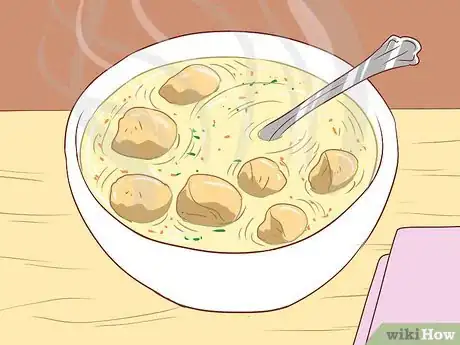








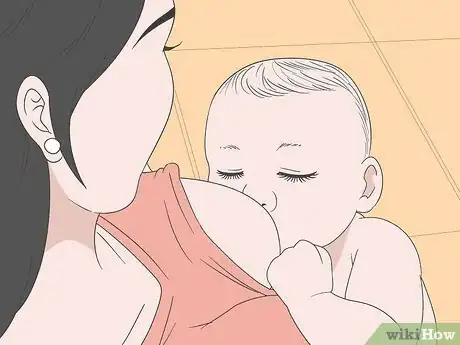





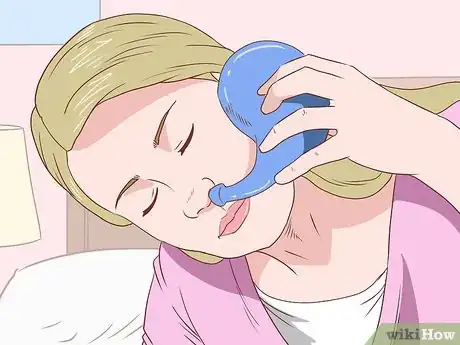


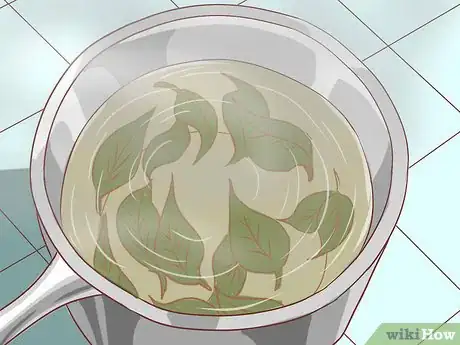



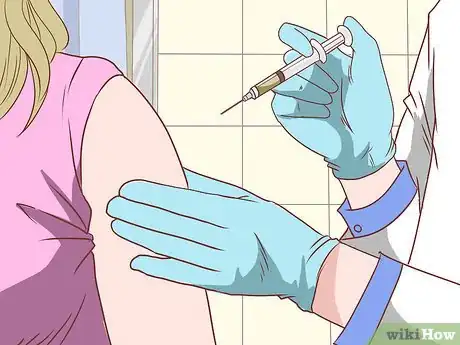






-Step-11-Version-2.webp)

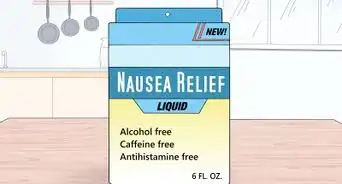



-Step-13.webp)













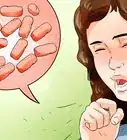




































Medical Disclaimer
The content of this article is not intended to be a substitute for professional medical advice, examination, diagnosis, or treatment. You should always contact your doctor or other qualified healthcare professional before starting, changing, or stopping any kind of health treatment.
Read More...